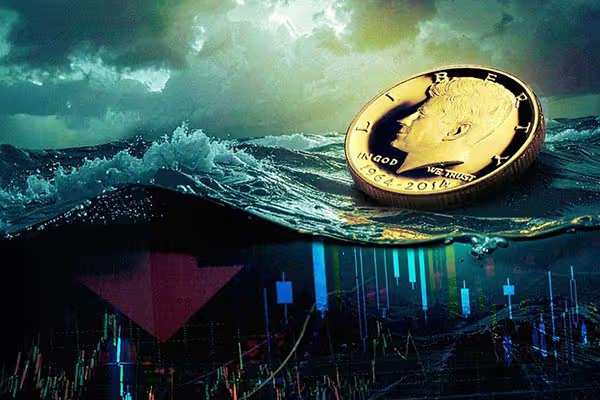Gold’s Surge Is Real — and It’s Only Just Getting Started
How the 2025 Rally Could Mark The Start Of Gold’s Next Major Chapter
The unprecedented gold rally is no stock-market fad. So far in 2025, the precious metal has soared more than 60%, powered by escalating U.S.–China trade tensions, a weakening dollar, and relentless central-bank buying. “The rally remains grounded in fundamentals, not frenzy,” said Lia Thomas, commodities strategist with Goldman Sachs Research, reaffirming that the move is being driven by macro realities rather than market speculation.
That same global uncertainty has been magnified at home. The U.S. government shutdown stretched into its 20th day on October 20, after senators failed for the tenth time to pass a funding bill. The prolonged impasse has delayed key economic reports, leaving investors and policymakers navigating a data vacuum just days before the Federal Reserve’s next policy meeting.
With the economy flashing warning signals, markets are pricing in a 99% probability that the Fed will cut interest rates next week, with another reduction expected in December. Historically, gold — a non-yielding asset — tends to perform well when borrowing costs decline.
Adding to the backdrop, traders are closely monitoring developments in U.S.–China trade relations after President Donald Trump confirmed that his upcoming meeting with President Xi Jinping will go ahead as planned. The prospect of renewed negotiations offers little immediate relief, however, as global markets remain on edge.
"I would not be surprised to see gold get to $5,000/oz at some point next year,” CPM Group managing partner Jeffrey Christian told Reuters. “That would be predicated on ongoing political problems and worsening political problems, which is actually what we have right now.”
Why This Rally Stands Apart
Tariff- and currency-driven uncertainty. Widening trade conflict and pressure on the dollar have pushed investors toward tangible assets. Gold’s safe-haven appeal has returned in force.
Central-bank demand. Central banks have continued to gobble up as much gold as possible, even with prices for the precious metal at their highest levels ever. “Central banks continue to be consistent and strategic buyers of gold, even at record prices, because of the role it plays in strengthening their reserve portfolios,” Joe Cavatoni, senior market strategist at the World Gold Council, said in comments sent to MarketWatch.
Comparisons to the 1970s. During the 1970s, gold prices skyrocketed after President Richard Nixon ended the Bretton Woods system, which had tied the U.S. dollar to gold.
Once the metal was allowed to trade freely, its value surged amid a perfect storm of runaway inflation, the oil crisis, and mounting geopolitical tension linked to the Vietnam War and the Cold War. “Back then, fiscal concerns and policy uncertainty led private investors to seek a store of value outside the system,” Thomas says. “If those fears were to crop up again, we could see the global trend toward diversification intensify.”
Gold Prices Are Just Getting Started
Goldman Sachs has updated its forecast for bullion to $4,900 by end-2026, citing the above factors and heavy ETF inflows. That would represent further upside from today’s levels and suggests this rally is far from complete.
Bank of America, noting that a record $34 billion has flowed into gold in just the past 10 weeks, is even more bullish, projecting gold will peak at $6,000 per ounce by spring.
Why Gold Matters Now
Gold often attracts attention only during crisis moments—but what sets this moment apart is that many of the macro-drivers are converging simultaneously. Currency debasement, rising debt burdens, geopolitical fragmentation and major central-bank reserve diversification all point toward a regime where gold is not just a hedge but a core allocation.
In that light, gold stands out not just because of its price but because of its purpose: a finite, globally recognized store of value with no counterparty risk. Unlike a bond or stock, gold’s value cannot vanish if an issuer defaults. That matters when the underlying assumptions of the global financial system are being questioned.
















